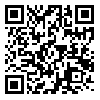Fri, Nov 7, 2025
[Archive]
Volume 6, Issue 4 (December 2010)
IJEEE 2010, 6(4): 248-257 |
Back to browse issues page
Download citation:
BibTeX | RIS | EndNote | Medlars | ProCite | Reference Manager | RefWorks
Send citation to:



BibTeX | RIS | EndNote | Medlars | ProCite | Reference Manager | RefWorks
Send citation to:
Padma Lalitha M, Veera Reddy V, Sivarami Reddy N. Application of Fuzzy and ABC Algorithm for DG Placement for Minimum Loss in Radial Distribution System. IJEEE 2010; 6 (4) :248-257
URL: http://ijeee.iust.ac.ir/article-1-264-en.html
URL: http://ijeee.iust.ac.ir/article-1-264-en.html
Abstract: (16253 Views)
Distributed Generation (DG) is a promising solution to many power system problems such as voltage regulation, power loss, etc. This paper presents a new methodology using Fuzzy and Artificial Bee Colony algorithm(ABC) for the placement of Distributed Generators(DG) in the radial distribution systems to reduce the real power losses and to improve the voltage profile. A two-stage methodology is used for the optimal DG placement . In the first stage, Fuzzy is used to find the optimal DG locations and in the second stage, ABC algorithm is used to find the size of the DGs corresponding to maximum loss reduction. The ABC algorithm is a new population based meta heuristic approach inspired by intelligent foraging behavior of honeybee swarm. The advantage of ABC algorithm is that it does not require external parameters such as cross over rate and mutation rate as in case of genetic algorithm and differential evolution and it is hard to determine these parameters in prior. The proposed method is tested on standard IEEE 33 bus test system and the results are presented and compared with different approaches available in the literature. The proposed method has outperformed the other methods in terms of the quality of solution and computational efficiency.
Keywords: DG Placement , Meta Heuristic Methods , ABC Algorithm , Loss Reduction , Radial Distribution System , PSO
Type of Study: Research Paper |
Subject:
Distributed Generation
Received: 2010/04/03 | Revised: 2011/12/24 | Accepted: 2013/12/30
Received: 2010/04/03 | Revised: 2011/12/24 | Accepted: 2013/12/30
| Rights and permissions | |
 |
This work is licensed under a Creative Commons Attribution-NonCommercial 4.0 International License. |







